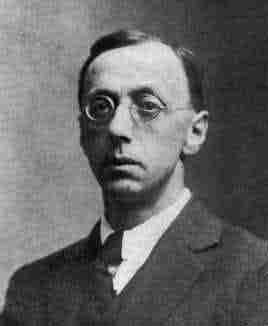

تاريخ الرياضيات

الاعداد و نظريتها

تاريخ التحليل

تار يخ الجبر

الهندسة و التبلوجي


الرياضيات في الحضارات المختلفة

العربية

اليونانية

البابلية

الصينية

المايا

المصرية

الهندية


الرياضيات المتقطعة

المنطق

اسس الرياضيات

فلسفة الرياضيات

مواضيع عامة في المنطق


الجبر

الجبر الخطي

الجبر المجرد

الجبر البولياني

مواضيع عامة في الجبر

الضبابية

نظرية المجموعات

نظرية الزمر

نظرية الحلقات والحقول

نظرية الاعداد

نظرية الفئات

حساب المتجهات

المتتاليات-المتسلسلات

المصفوفات و نظريتها

المثلثات


الهندسة

الهندسة المستوية

الهندسة غير المستوية

مواضيع عامة في الهندسة

التفاضل و التكامل


المعادلات التفاضلية و التكاملية

معادلات تفاضلية

معادلات تكاملية

مواضيع عامة في المعادلات


التحليل

التحليل العددي

التحليل العقدي

التحليل الدالي

مواضيع عامة في التحليل

التحليل الحقيقي

التبلوجيا

نظرية الالعاب

الاحتمالات و الاحصاء

نظرية التحكم

بحوث العمليات

نظرية الكم

الشفرات

الرياضيات التطبيقية

نظريات ومبرهنات


علماء الرياضيات

500AD

500-1499

1000to1499

1500to1599

1600to1649

1650to1699

1700to1749

1750to1779

1780to1799

1800to1819

1820to1829

1830to1839

1840to1849

1850to1859

1860to1864

1865to1869

1870to1874

1875to1879

1880to1884

1885to1889

1890to1894

1895to1899

1900to1904

1905to1909

1910to1914

1915to1919

1920to1924

1925to1929

1930to1939

1940to the present

علماء الرياضيات

الرياضيات في العلوم الاخرى

بحوث و اطاريح جامعية

هل تعلم

طرائق التدريس

الرياضيات العامة

نظرية البيان
Ebenezer Cunningham
المؤلف:
W H McCrea
المصدر:
Ebenezer Cunningham, Bull. London Math. Soc. 10
الجزء والصفحة:
...
22-5-2017
949
Died: 12 February 1977

Ebenezer Cunningham's father was George Cunningham (born in Bethnal Green, London about 1846) who was a cabinet maker, and his mother was Fanny C Cunningham (born in Dalston, London about 1848). Ebenezer had an older brother George (born about 1879) and a younger brother Charles (born about 1884).
Ebenezer Cunningham was educated at Owen's School Islington and from there he won an open mathematical scholarship to St John's College, Cambridge, which he entered in 1899. His lecturers at Cambridge included Baker, Larmor, J G Leathem and R Pendlebury. Baker was his director of studies. At Cambridge his main interests outside mathematics were choral music and rowing. He became a pacifist while at Cambridge through the Boer War years 1899 to 1902 [1]:-
The Boer War, which coincided with his undergraduate days, determined once and for all his attitude towards war; he was an uncompromising pacifist and, as such, his position during the First World War made him unpopular in many quarters, but his moderating influence with like-minded but hasty young men was highly beneficial, and his friends stuck to him.
After graduating as Senior Wrangler in 1902 he worked for a Smith's prize. Results similar to those he obtained were, unfortunately, published in a French journal before he had submitted. He started work on a new topic submitting a winning entry on matrices for the Smith's prize of 1904.
In 1904 not only was he elected to a Fellowship at St John's College but he also became a lecturer at Liverpool University. While at Liverpool he collaborated with Bateman.
Until 1907 he worked both in Liverpool and in Cambridge. Then he moved to University College London where he worked under Pearson. He wrote on linear differential equations, prompted by Pearson's work and other work related to statistics.
Although Cunningham's early papers were on analysis, he was soon to change topic. While at Cambridge, he had read Larmor's famous book Aether and Matter and then, in 1905, after reading Einstein's paper on special relativity, he began to work on that topic. Cunningham published The Principle of Relativity in 1914, the first English book on the topic. Many papers on relativity followed.
In fact Cunningham had returned to St John's College Cambridge in 1911, at the invitation of Baker. His work in Cambridge was interrupted by World War I when he worked on the land rather than join the army. Of course during this period he found it hard to keep in touch with developments in relativity theory which took place in Germany. After this he never returned to major research projects and spent the rest of his career as an enthusiastic teacher of mathematics at Cambridge. Cunningham himself blamed the administrative work for his lack of research, saying that it:-
... for some years came between me and any freedom to follow up and keep abreast of the extremely rapid advance of science.
Cunningham's pacifist views were connected to his strong religious views [1]:-
A keenly religious man, Cunningham devoted a large amount of energy to affairs of Emmanuel Congregational Church, of which he was an office-bearer. He was chairman of the Congregational Union of England and Wales for 1953-54.
We have already mentioned his pacifist views during World War I but [1]:-
Later he became attracted by the Oxford Group movement, though never by its extravagances.
As to his interests outside mathematics [1]:-
Music played a great part in his life, and on at least one occasion he electrified and humanized a somewhat solemn gathering at his house by sitting down at his piano and singing a comic song.
The obituary [1] contains the following tribute:-
He was a man of patent sincerity and great kindness who served his college and university well.
Articles:
- W H McCrea, Ebenezer Cunningham, Bull. London Math. Soc. 10 (1978), 116-126.
 الاكثر قراءة في 1880to1884
الاكثر قراءة في 1880to1884
 اخر الاخبار
اخر الاخبار
اخبار العتبة العباسية المقدسة

الآخبار الصحية















 قسم الشؤون الفكرية يصدر كتاباً يوثق تاريخ السدانة في العتبة العباسية المقدسة
قسم الشؤون الفكرية يصدر كتاباً يوثق تاريخ السدانة في العتبة العباسية المقدسة "المهمة".. إصدار قصصي يوثّق القصص الفائزة في مسابقة فتوى الدفاع المقدسة للقصة القصيرة
"المهمة".. إصدار قصصي يوثّق القصص الفائزة في مسابقة فتوى الدفاع المقدسة للقصة القصيرة (نوافذ).. إصدار أدبي يوثق القصص الفائزة في مسابقة الإمام العسكري (عليه السلام)
(نوافذ).. إصدار أدبي يوثق القصص الفائزة في مسابقة الإمام العسكري (عليه السلام)


















